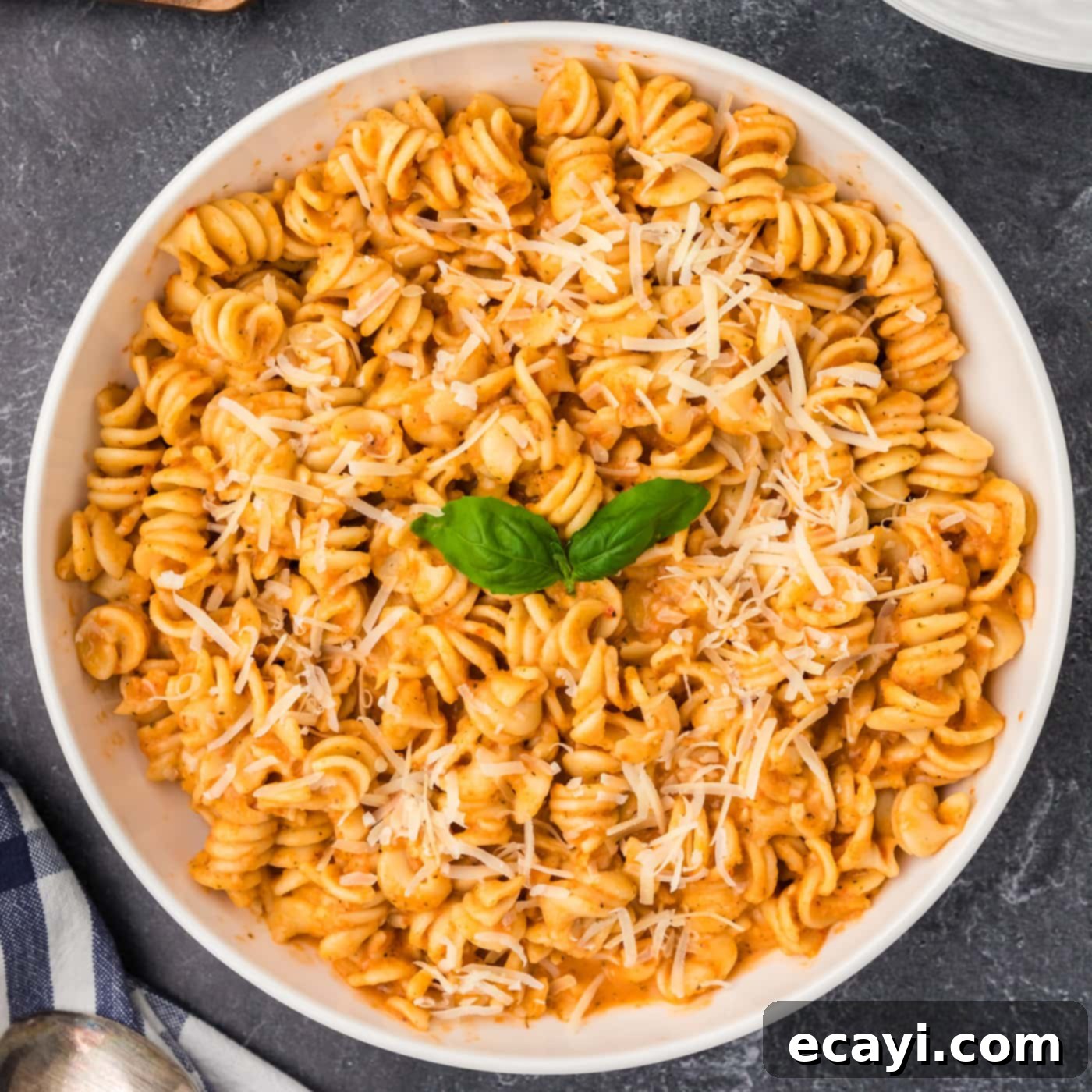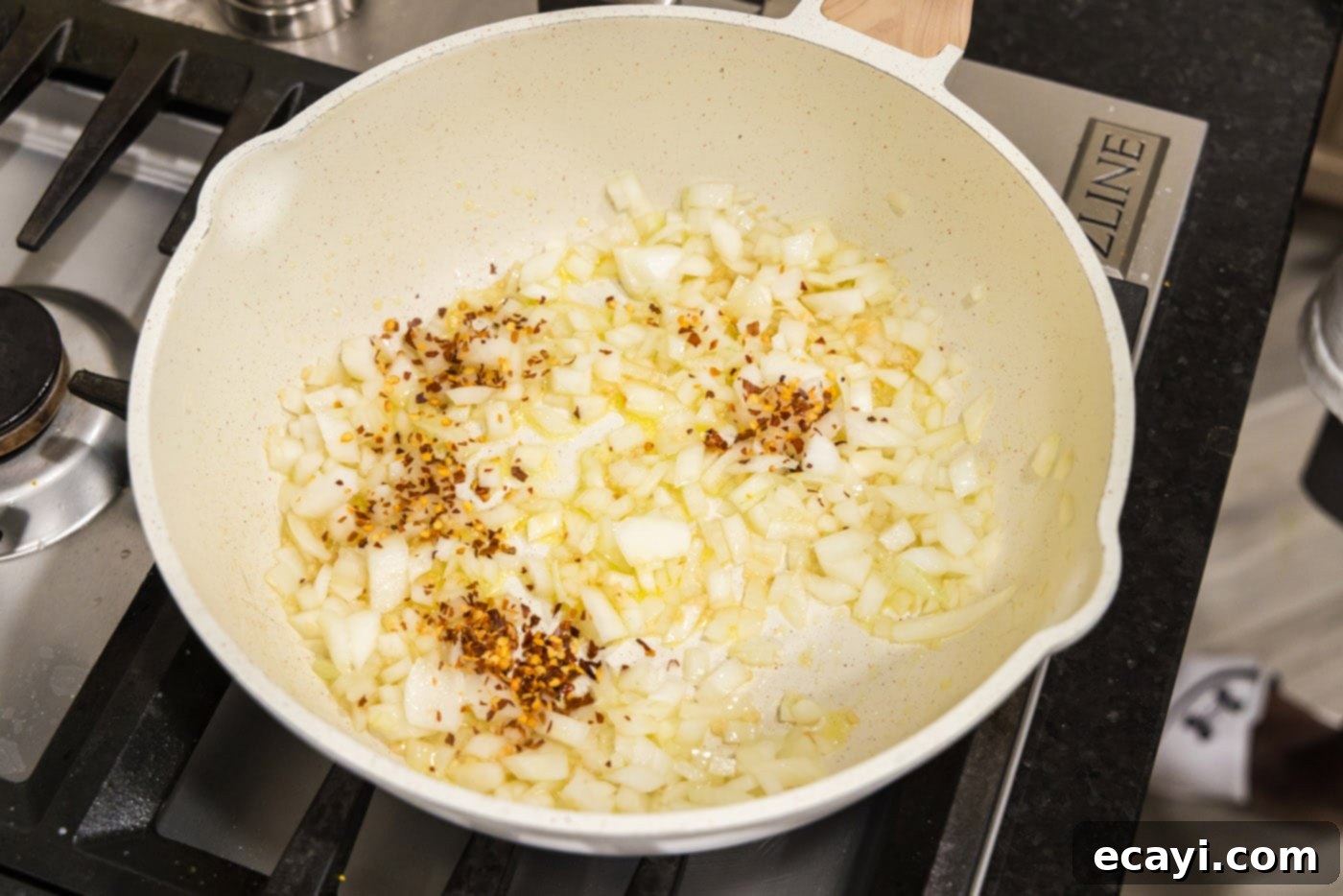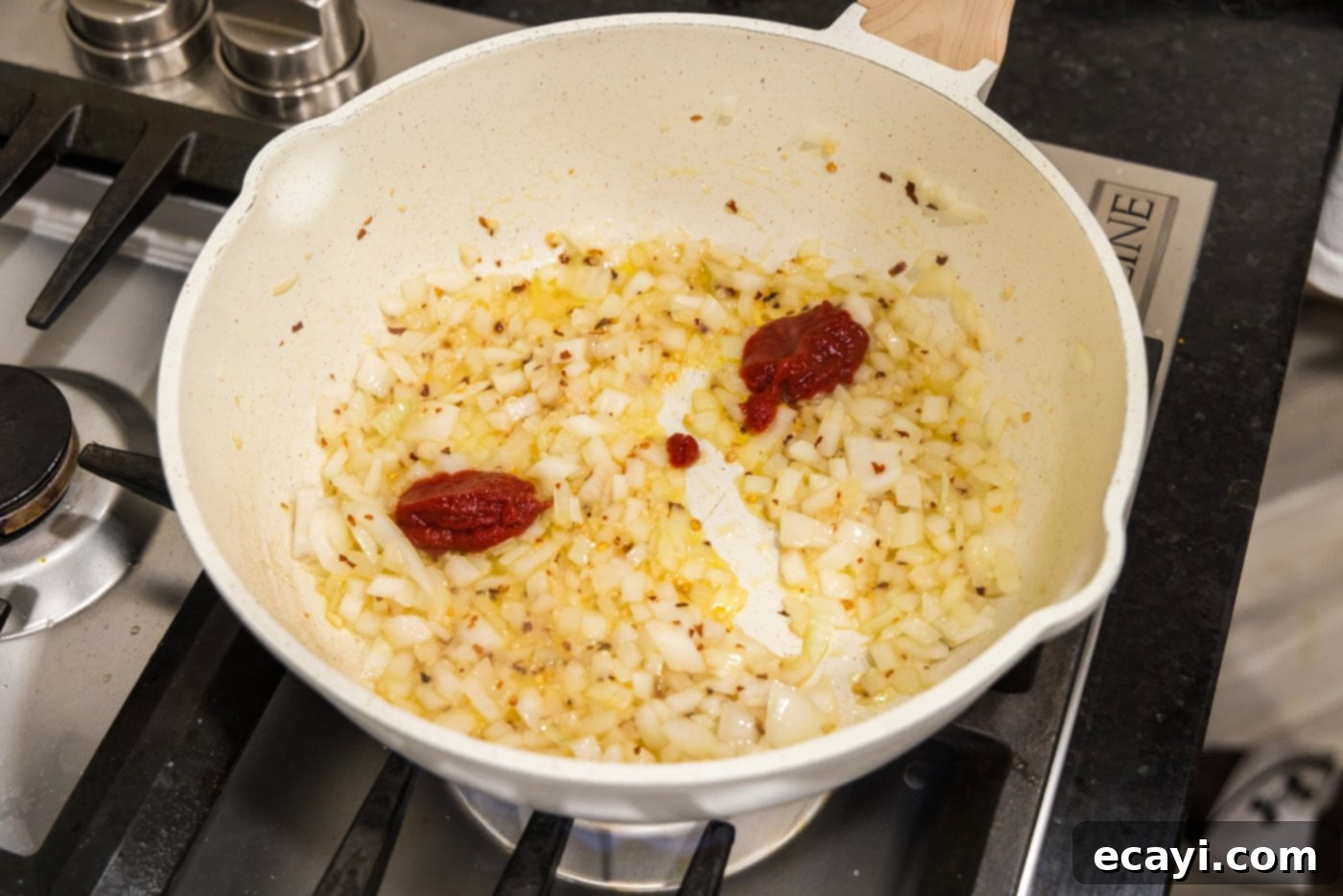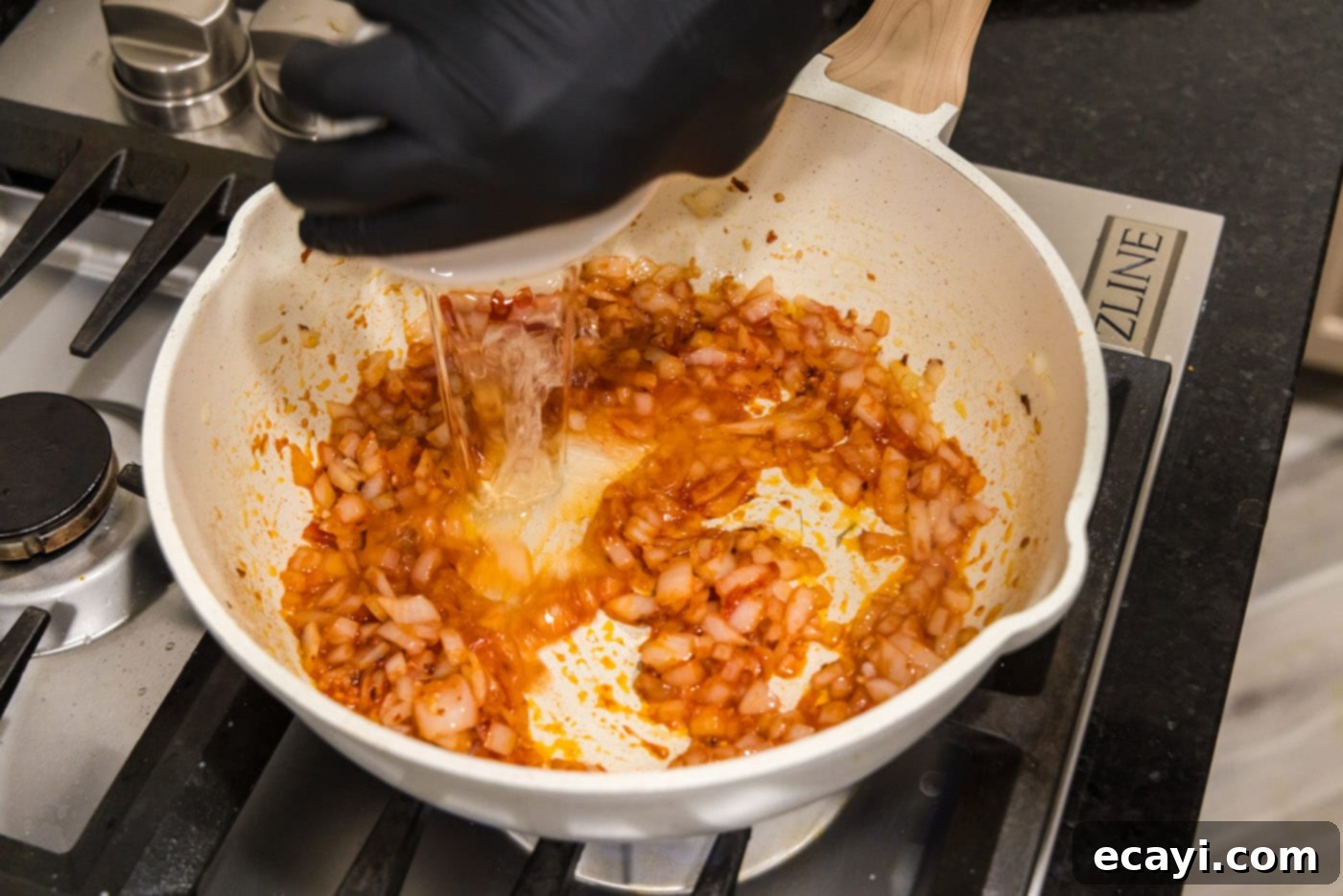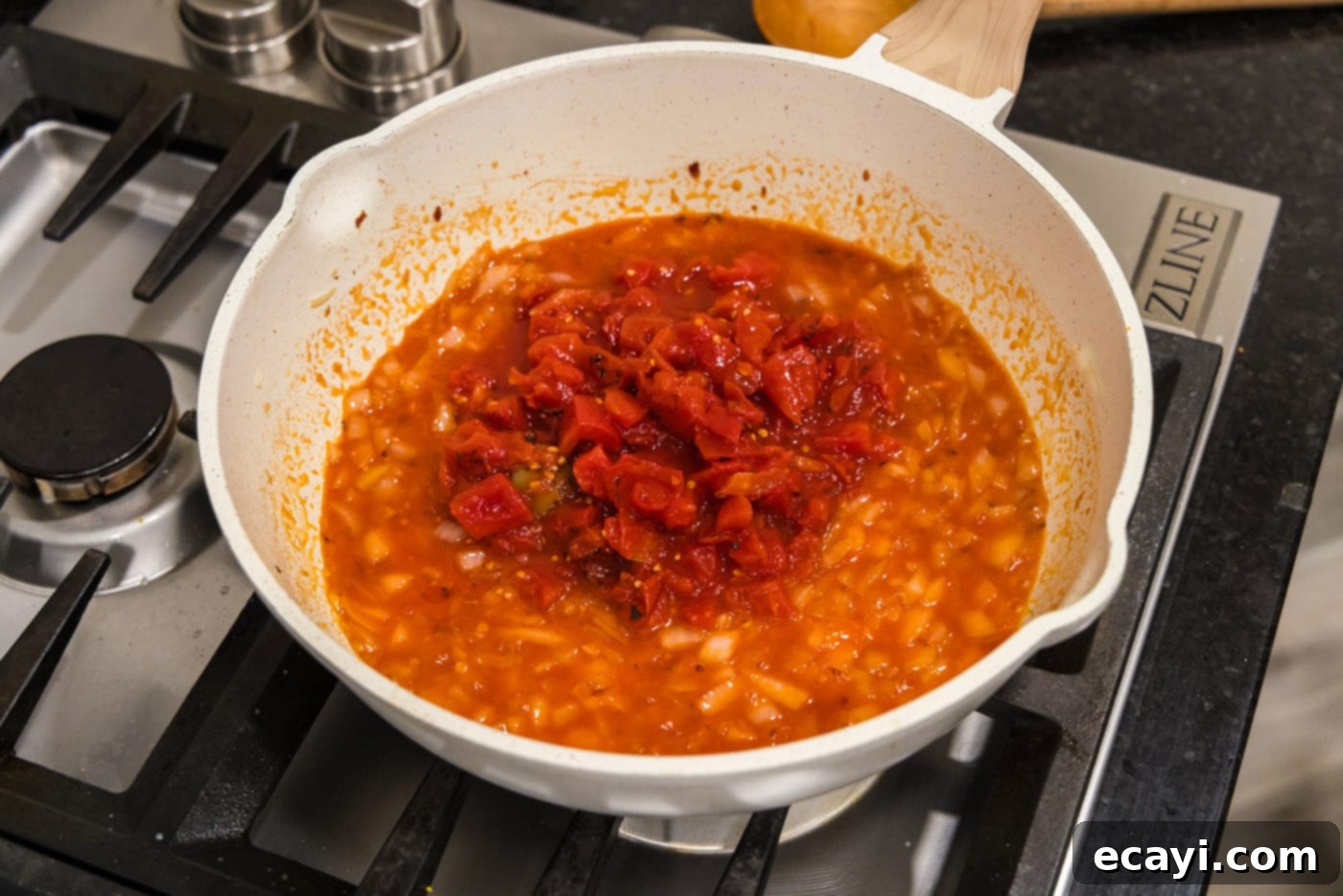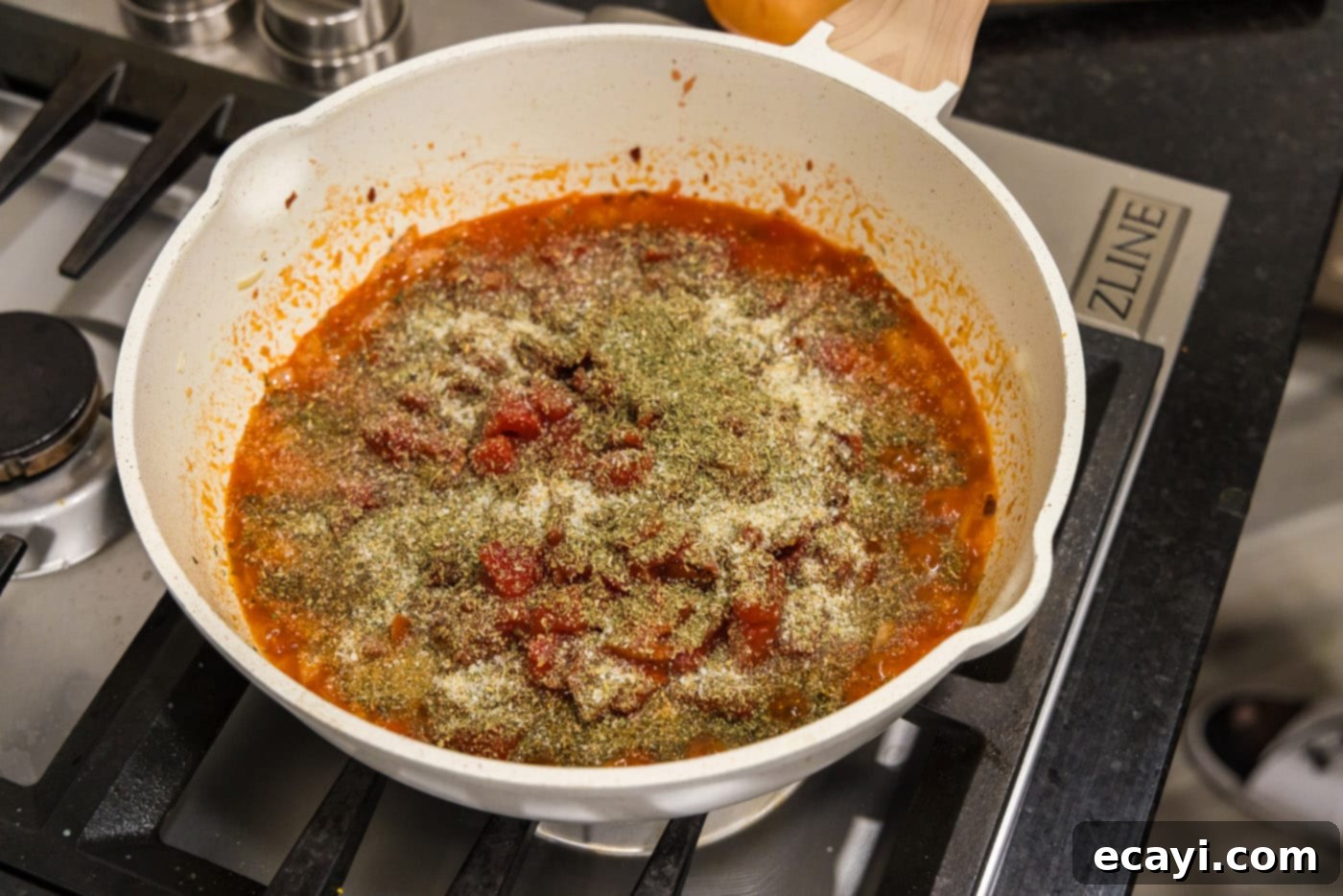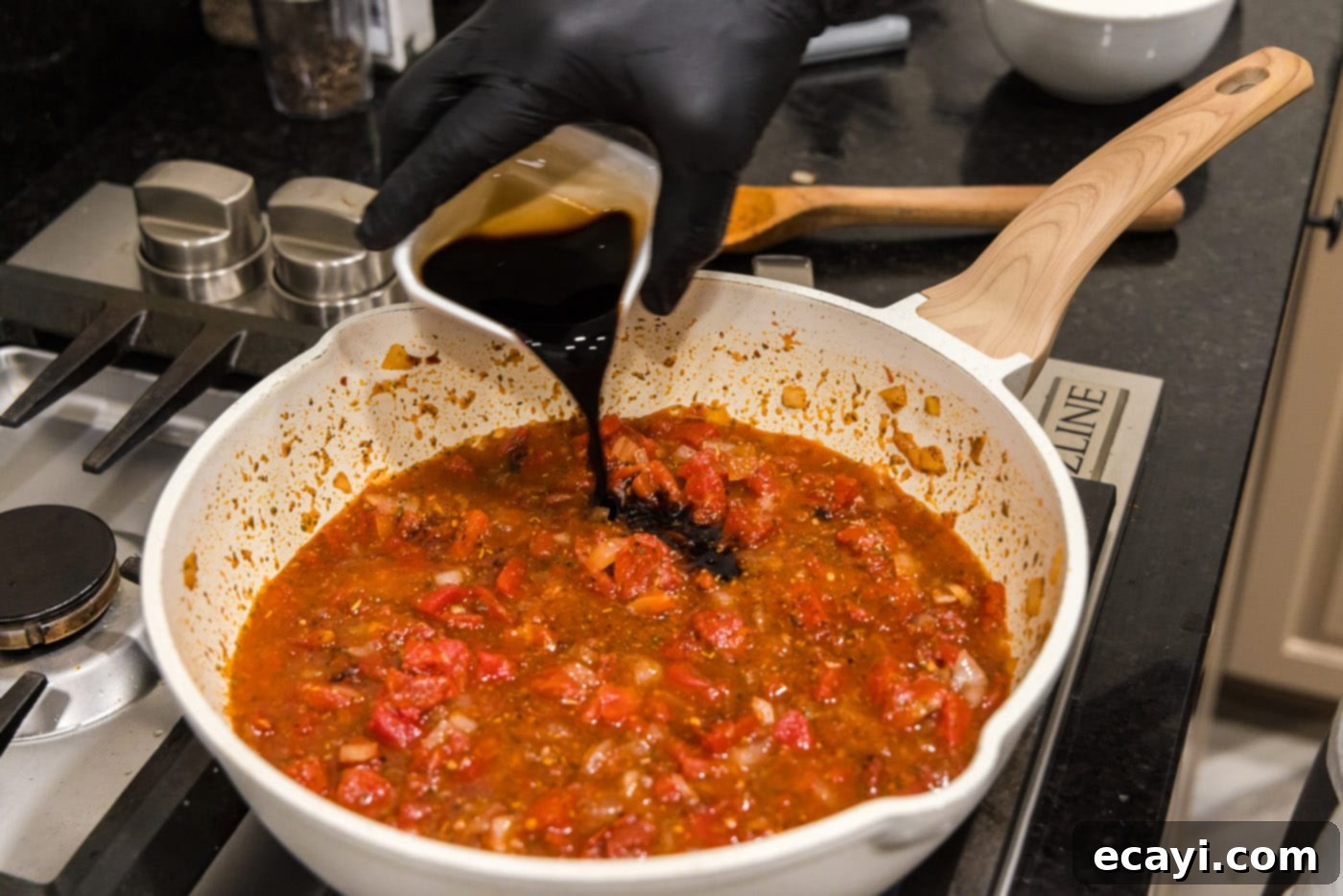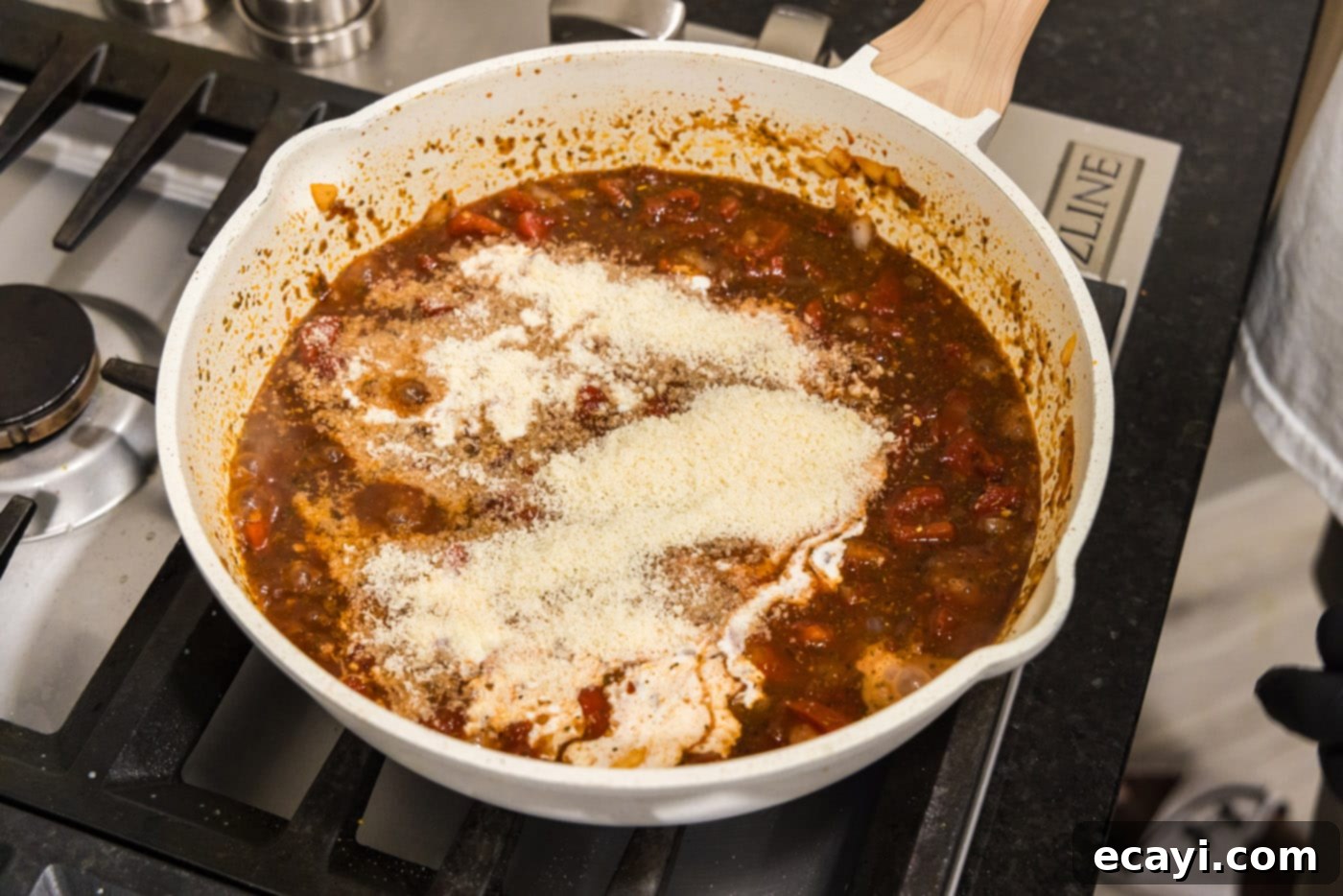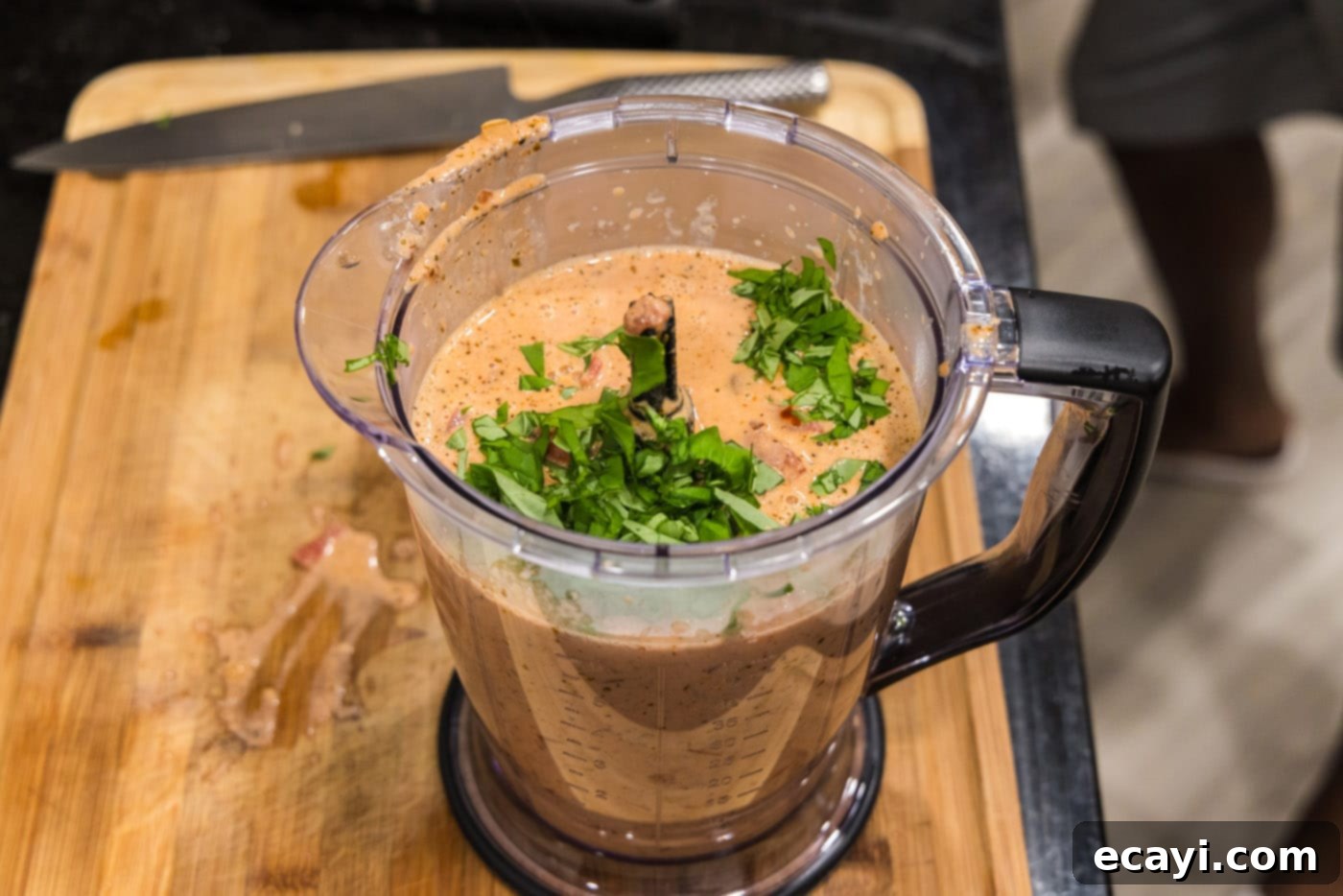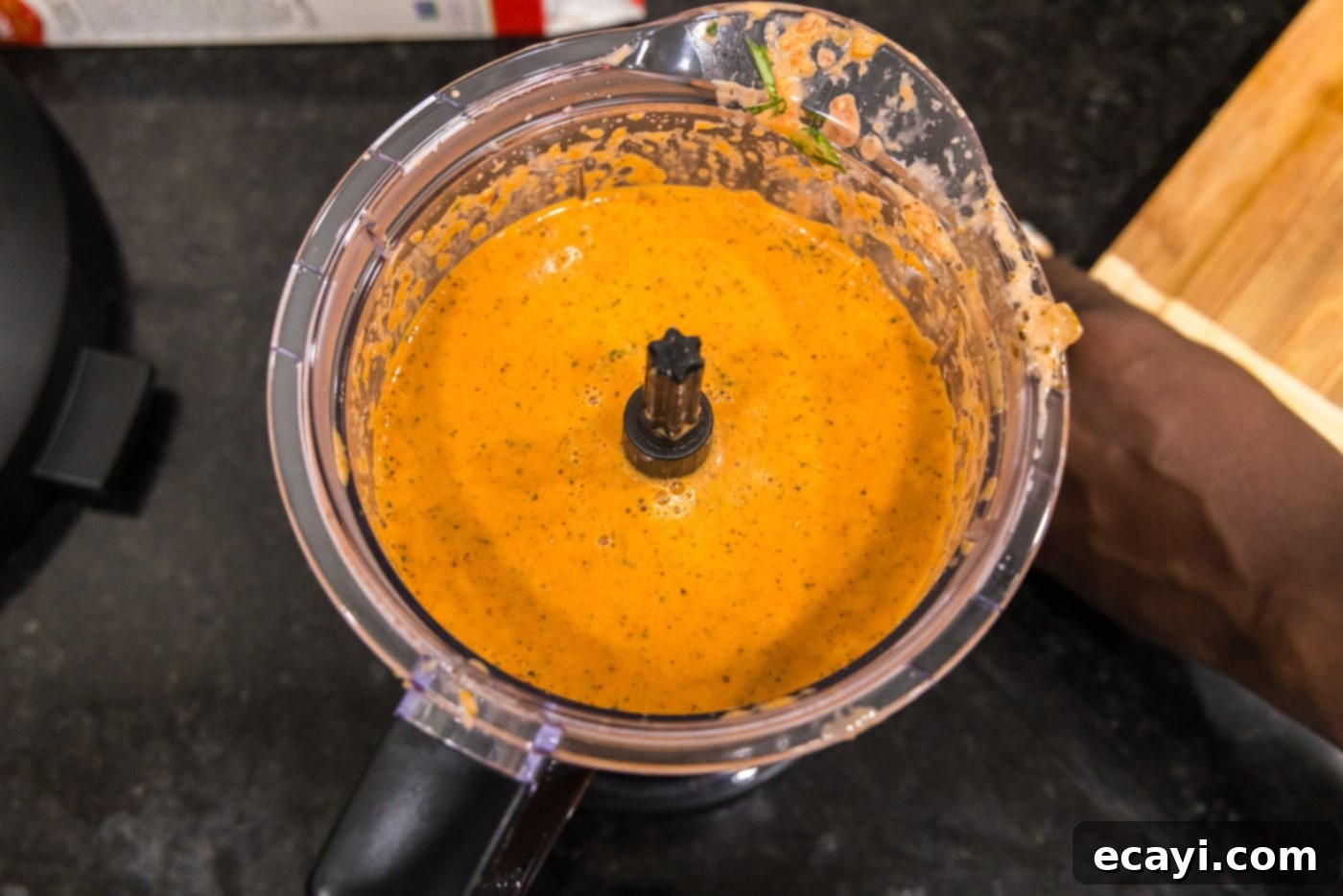The Ultimate Creamy Vodka Sauce Recipe: Quick & Easy Homemade Pasta Perfection
Prepare to elevate your pasta nights with this incredibly easy homemade vodka sauce. This velvety smooth, aromatic, and intensely flavorful sauce comes together on your stovetop in just about 30 minutes, making it the perfect weeknight indulgence or a show-stopping addition to any meal. Forget about bland jarred options; once you experience the rich depth of this homemade rendition, you’ll never look back. It’s the ultimate companion to tender noodles, succulent meatballs, or robust Italian sausages, promising a restaurant-quality experience right from your kitchen.
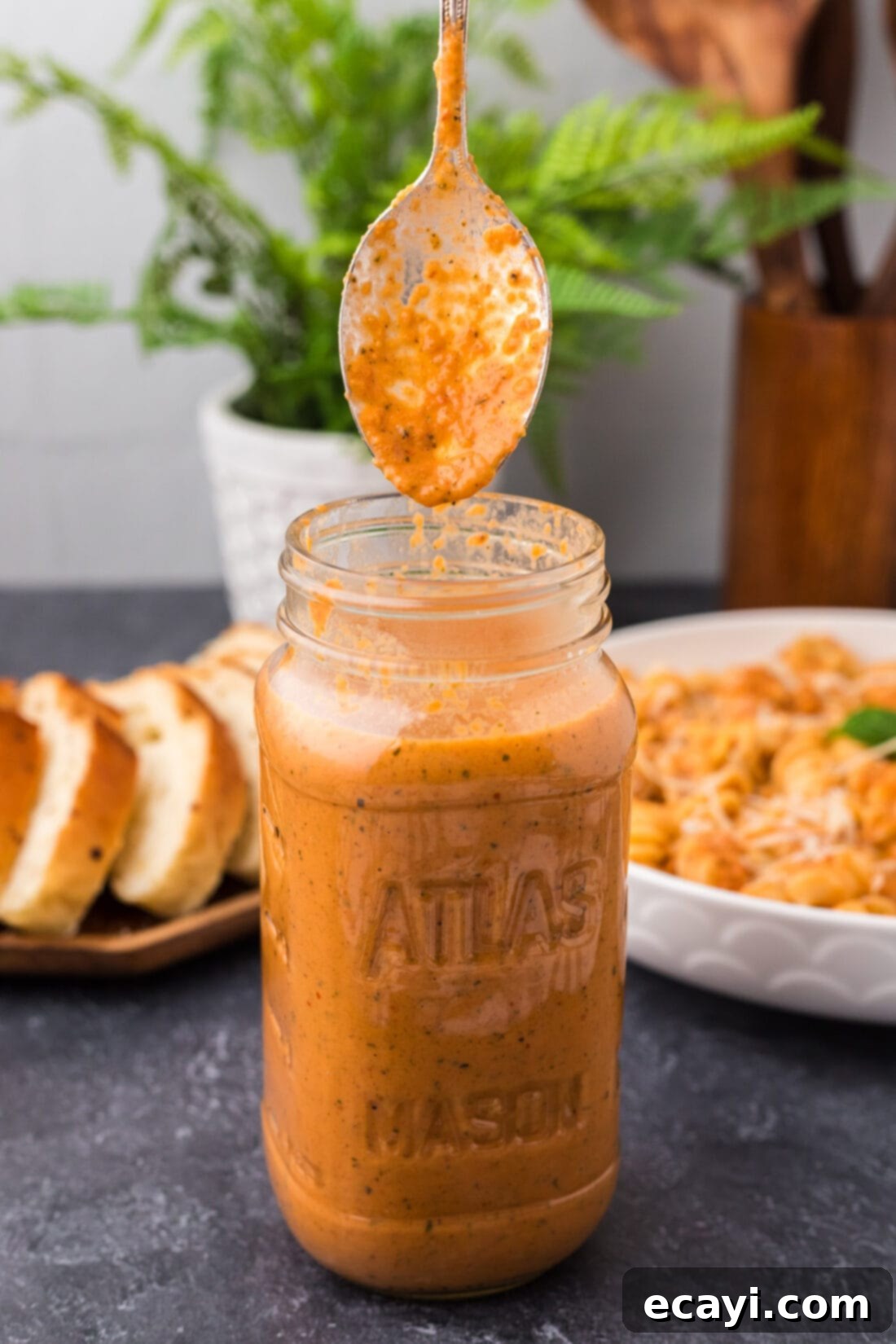
Why This Homemade Vodka Sauce Recipe Is a Must-Try
This vodka sauce isn’t just another tomato-based pasta topping; it’s a culinary experience designed to impress with minimal effort. Its creamy, vibrant texture and complex flavor profile make it an instant favorite for pairing with a variety of dishes, from classic pasta to gourmet meatballs and hearty Italian sausages. What sets this particular recipe apart is the thoughtful combination of ingredients that build layers of exquisite taste.
The magic begins with a foundation of fragrant garlic and onion, gently sautéed to release their sweet essences. Then, the inclusion of red pepper flakes adds a subtle, warming kick that awakens the palate without overpowering the delicate balance. Italian seasoning provides a classic herbaceous note, while a splash of balsamic vinegar introduces a much-needed tang and a hint of sweetness, cutting through the richness. Finally, grated Parmesan cheese melts into the sauce, contributing a savory, umami depth that is simply irresistible.
But the true secret weapon in achieving this sauce’s signature richness and silky texture is the vodka itself. Far from just adding an alcoholic punch, vodka plays a crucial role in emulsifying the sauce, helping the fats from the cream and the water from the tomatoes to combine harmoniously. It also extracts and enhances the subtle flavors of the tomatoes, creating a more cohesive and intensely flavored sauce. Most of the alcohol evaporates during cooking, leaving behind only its unique flavor-boosting properties. A final touch of fresh basil, blended into the finished sauce, infuses it with a bright, peppery freshness that elevates every spoonful, making it truly unforgettable.
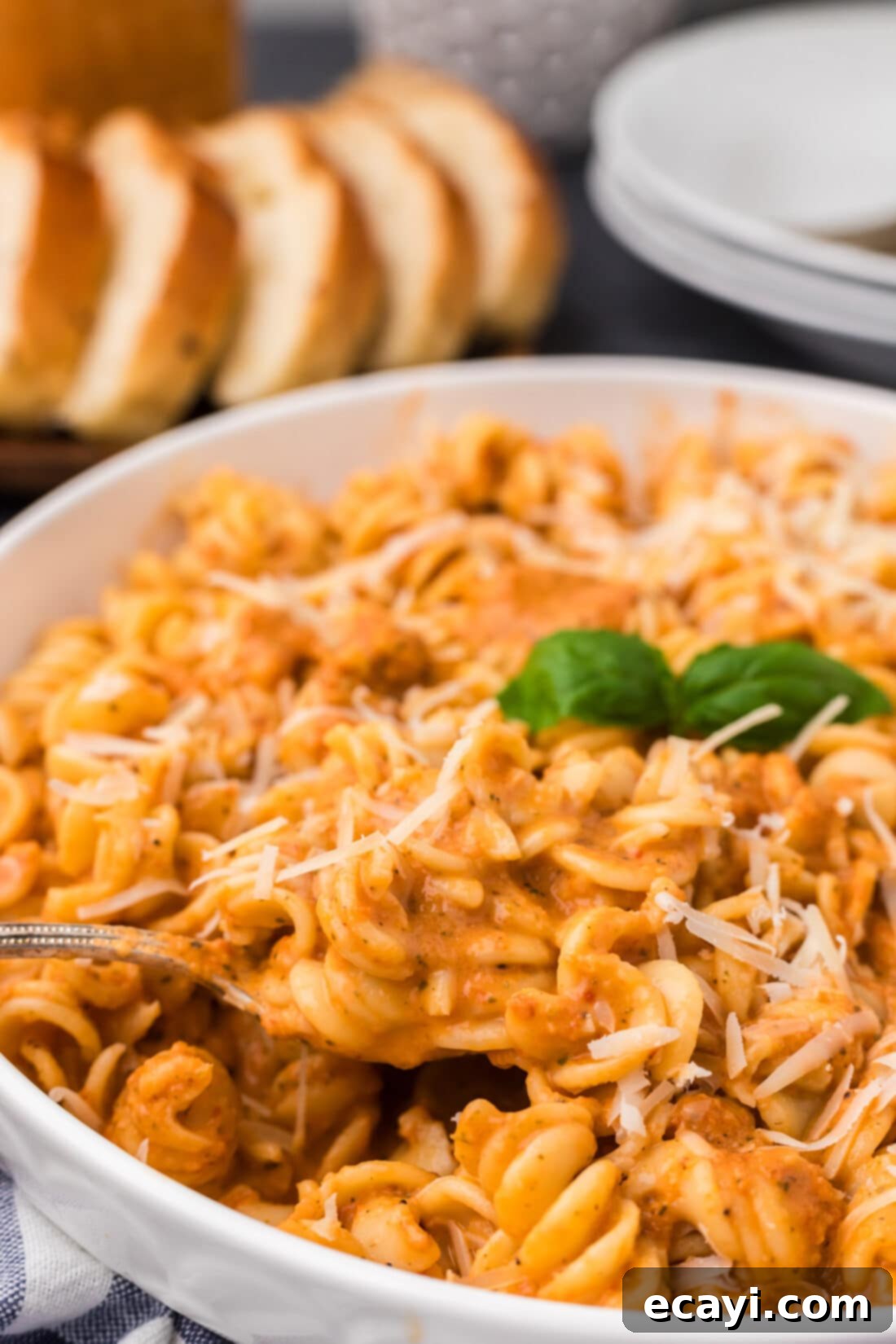
Key Ingredients for Your Perfect Vodka Sauce
Crafting the perfect vodka sauce starts with selecting quality ingredients. While this recipe is straightforward, each component plays a vital role in building the sauce’s signature flavor and texture. For precise measurements and step-by-step instructions, you’ll find a printable version of this recipe at the very end of this post.
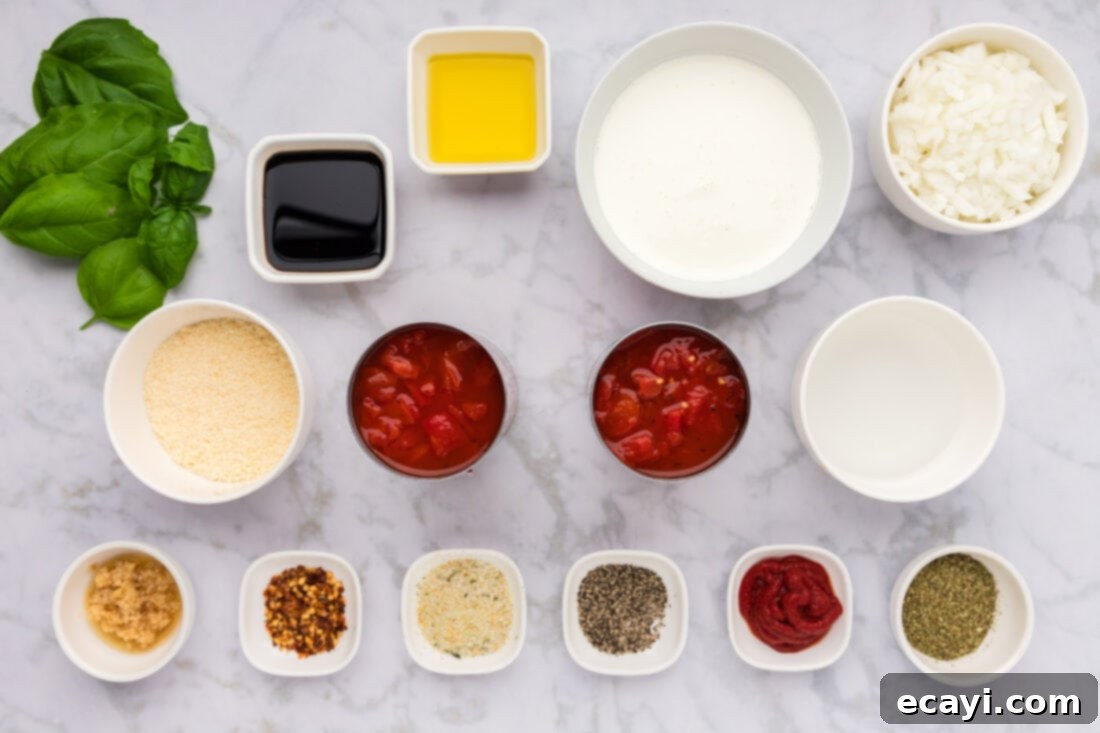
Ingredient Spotlight & Expert Tips for Best Results
Understanding the role of each ingredient and considering potential adjustments can significantly enhance your homemade vodka sauce. Here’s a closer look at what goes into this delicious creation:
VODKA – When we say the kind of vodka you use in this sauce matters, it truly does. You don’t need a top-shelf spirit, but choose a brand that you wouldn’t mind sipping on its own. The vodka is a prominent flavor enhancer, and its quality will subtly influence the overall taste of your sauce. This is not the recipe to omit vodka in. It’s truly a star ingredient that contributes in multiple ways: it acts as an emulsifier, helping the fats from the cream and the water from the tomatoes bind together smoothly, resulting in a beautifully cohesive sauce. It also helps to extract and deepen the subtle flavors of the tomatoes, making them more vibrant. While most of the alcohol content will cook off during the simmering process, leaving behind its distinctive contribution to the flavor profile. If you’re looking for a rich, tomato-based sauce without the vodka, I recommend trying a classic spaghetti with meatballs in marinara sauce recipe, but be aware that the taste and texture will differ significantly from an authentic vodka sauce. The taste of vodka in the finished sauce is not overwhelming; it perfectly complements the creamy tomato base, adding complexity and warmth.
TOMATOES – This recipe cleverly combines both tomato paste and canned diced tomatoes to achieve a perfectly balanced flavor and texture. The tomato paste is crucial for providing a concentrated, robust tomato flavor and a hint of tartness, contributing to the sauce’s deep red hue and umami richness. Meanwhile, the canned diced tomatoes add a fresh, bright tomato taste and provide a pleasing texture to the sauce. You can choose high-quality canned diced tomatoes, such as San Marzano, for an even richer flavor. If you prefer an extra smooth sauce, you can briefly pulse the diced tomatoes in a food processor before adding them, or simply rely on the final blending step to achieve your desired consistency.
AROMATICS (GARLIC & ONION) – These are the unsung heroes that build the foundational flavor of your sauce. Sautéing minced garlic and chopped onion until fragrant and translucent releases their sweet, savory compounds, creating a depth that elevates the entire dish. Don’t rush this step; patiently cooking these aromatics is key to a truly delicious sauce.
RED PEPPER FLAKES – For those who appreciate a touch of warmth and subtle heat, red pepper flakes are a fantastic addition. They don’t make the sauce overtly spicy but rather add a pleasant zing that cuts through the creaminess and brightens the overall flavor. Adjust the amount to your preference – a little goes a long way!
ITALIAN SEASONING – A blend of dried herbs like oregano, basil, thyme, and rosemary, Italian seasoning brings a quintessential Mediterranean aromatic profile to the sauce. It adds herbaceous depth and complexity without requiring a cabinet full of individual spices.
BALSAMIC VINEGAR – A small amount of balsamic vinegar works wonders by adding a subtle sweet and tangy note. This acidity brightens the sauce, balancing the richness of the cream and the intensity of the tomatoes, creating a more well-rounded flavor profile.
HEAVY CREAM – The heart of the “creamy” in creamy vodka sauce! Heavy whipping cream lends its luxurious texture and rich mouthfeel, transforming the tomato base into a silky, indulgent sauce. It also mellows the acidity of the tomatoes, creating a harmonious blend.
PARMESAN CHEESE – Freshly grated Parmesan cheese is non-negotiable for the best flavor. It contributes a salty, nutty, and deeply savory umami bomb that enhances all the other ingredients. Avoid pre-grated Parmesan as it often contains anti-caking agents that can affect the sauce’s texture and flavor.
FRESH BASIL LEAVES – While dried basil is used during cooking for its foundational flavor, fresh basil added at the end is a game-changer. Its vibrant, sweet, and slightly peppery notes provide a fresh aromatic lift that truly completes the sauce. Blitzing it in the food processor with the finished sauce ensures its flavor permeates every drop.
Mastering Homemade Vodka Sauce: Step-by-Step Guide
These step-by-step photos and detailed instructions are here to help you visualize how to make this recipe perfectly. For a concise, printable version of the recipe, complete with precise measurements and full instructions, simply Jump to Recipe at the bottom of this post.
- Sauté the Aromatics: Begin by heating olive oil in a large, heavy-bottomed skillet over medium-high heat. You’ll know the oil is ready when it starts to shimmer gently. Add the minced garlic, chopped onion, and red pepper flakes to the hot oil. Cook this fragrant mixture for 2-3 minutes, stirring occasionally. The goal here is to soften the onions and garlic, allowing their sweet, pungent aromas to develop without browning them, which can lead to a bitter taste. The red pepper flakes will also release their gentle heat into the oil, infusing the base of the sauce.

- Build the Tomato Base: Next, stir in the tomato paste, followed by the vodka, canned diced tomatoes (undrained), dried basil, garlic salt, and black pepper. Stir all these ingredients thoroughly to combine. Bring the mixture to a gentle boil, then reduce the heat to a simmer, stirring occasionally. This step is crucial for allowing the tomato paste to deepen in flavor and for the vodka to deglaze the pan, picking up any flavorful bits from the bottom. As the sauce simmers, the alcohol from the vodka will evaporate, leaving behind its unique contribution to the sauce’s rich body and flavor. Continue to simmer for about 5-7 minutes, allowing the flavors to meld beautifully.




- Achieve Creaminess and Richness: Now, pour in the balsamic vinegar, heavy cream, and grated Parmesan cheese. Stir these ingredients thoroughly until everything is well combined and the cheese has melted seamlessly into the sauce. Bring it back to a gentle boil for another minute or two, allowing the cream to incorporate and create that characteristic velvety texture and beautiful pinkish-orange hue that vodka sauce is known for.


- Final Blend for Silky Smoothness: Carefully transfer the entire contents of the skillet into a food processor. Add the chopped fresh basil leaves. Process the sauce until it is completely smooth, with no chunks of tomato or onion remaining. This blending step is key to achieving the luxurious, restaurant-quality consistency. The fresh basil will infuse the sauce with a bright, aromatic finish that truly elevates it. Taste and adjust seasonings if necessary, adding more salt or pepper as desired.


Frequently Asked Questions & Expert Tips for Vodka Sauce
Once your delicious homemade vodka sauce has cooled completely, transfer it to an airtight container or a sealed jar. It can be safely stored in the refrigerator for up to 5 days. To reheat, gently warm the sauce in a saucepan over medium-low heat, stirring occasionally, until it’s heated through. If it seems too thick, you can add a splash of water, broth, or even a little milk or cream to reach your desired consistency.
Yes, absolutely! Vodka sauce freezes beautifully, making it an excellent candidate for meal prep. To freeze, ensure the sauce is fully cooled. Then, seal it in an airtight freezer-safe jar, container, or a heavy-duty ziptop bag. Remember to leave a little “wiggle room” at the top (about an inch) to allow for expansion as the sauce freezes. It can be stored in the freezer for up to 5 months. When you’re ready to enjoy it, allow the frozen sauce to thaw overnight in the refrigerator. Reheat it gently in a saucepan over medium-low heat, stirring frequently. You might need to add a splash of water or cream if the texture seems too thick after thawing and reheating.
Vodka plays a crucial role beyond just its name! It acts as an emulsifier, helping the acidic tomatoes and fatty cream blend seamlessly, creating that signature smooth and stable sauce. It also helps to unlock and enhance volatile flavor compounds in the tomatoes, intensifying their taste. Most of the alcohol evaporates during the cooking process, leaving behind a subtle, nuanced flavor that adds depth without tasting boozy. While you can omit it, the sauce won’t have the same authentic flavor profile or creamy texture. If you must skip it, a splash of vegetable broth with a squeeze of lemon juice can mimic some of the acidity, but it won’t replicate the emulsifying properties or unique flavor contribution of vodka.
Yes, this particular homemade vodka sauce recipe is vegetarian. It contains no meat products, relying on the richness of dairy and tomatoes for its hearty flavor. It’s a wonderful choice for those seeking delicious meat-free pasta options. Just ensure any broth you might add for thinning is vegetable-based.
Vodka sauce pairs wonderfully with a variety of pasta shapes! Typically, short, tubular or ridged pasta like penne, rigatoni, or fusilli are excellent choices because their nooks and crannies are perfect for capturing and holding the creamy sauce. However, long pasta like fettuccine or linguine can also be delightful, offering a luxurious coating with every strand. Ultimately, choose your favorite shape – the sauce is versatile enough to complement many options.
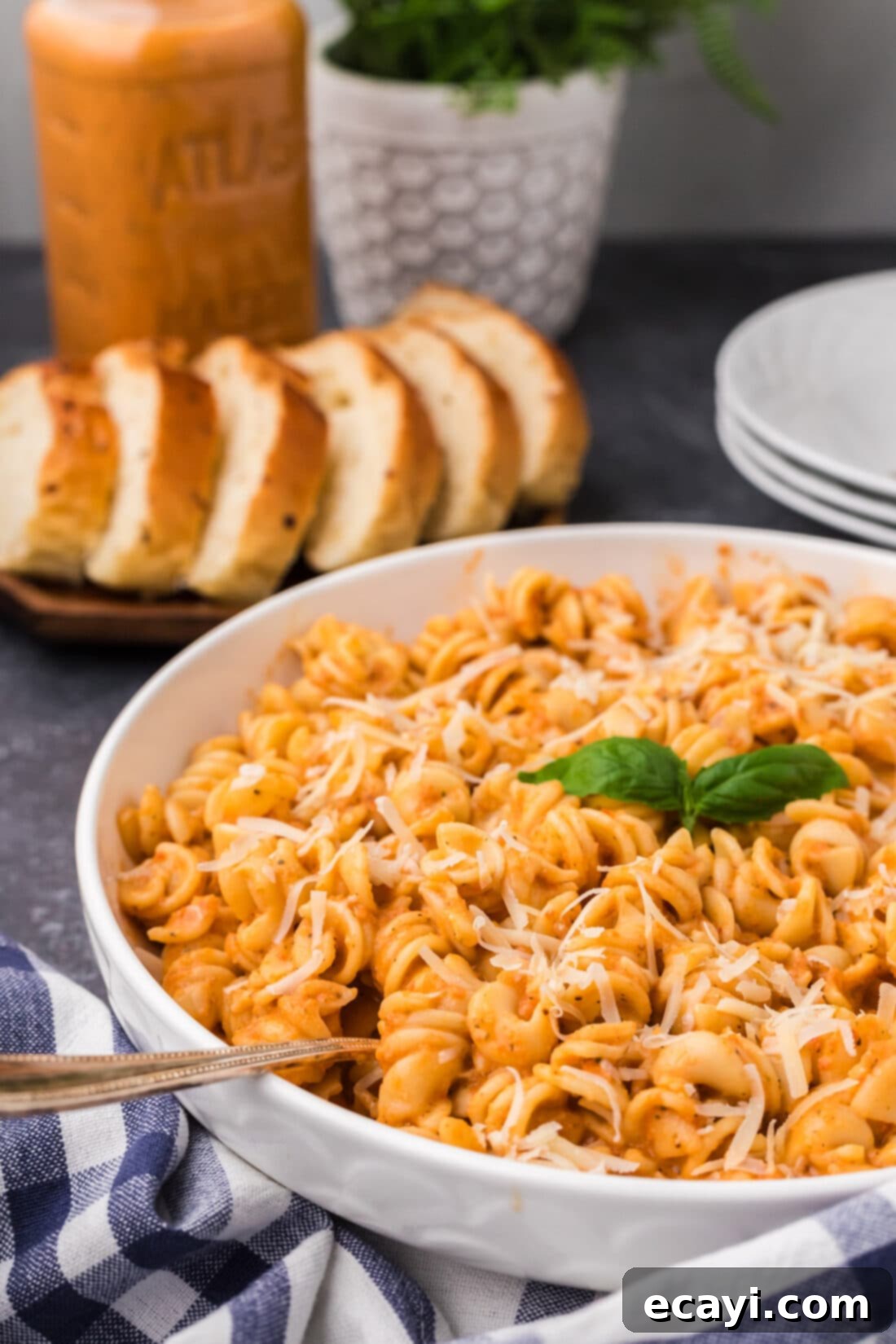
Creative Ways to Serve Your Homemade Vodka Sauce
While often associated with pasta, this versatile homemade vodka sauce can be much more than just a spaghetti topping. Its rich, creamy, and flavorful profile makes it an incredible addition to a wide array of dishes. Here are some inspiring serving suggestions to make the most of your delicious sauce:
- Classic Pasta Companion: The most popular choice! Toss it with your favorite pasta – penne, rigatoni, fettuccine, or even tortellini – for a comforting and satisfying meal. Garnish with extra Parmesan and fresh basil.
- Elevate Chicken Dishes: Spoon this luscious sauce over pan-seared or baked chicken breasts. It adds incredible moisture and flavor, turning simple chicken into a gourmet meal.
- Meatball Magic: Transform ordinary meatballs (beef, pork, or even vegetarian) by simmering them directly in the vodka sauce. It’s a fantastic alternative to traditional marinara and adds a creamy twist.
- Italian Sausage Delight: Serve cooked Italian sausages (sweet or spicy) smothered in vodka sauce. This pairing creates a robust and hearty dish perfect with crusty bread for dipping.
- Gourmet Garlic Bread: Use it as a dip for warm, crusty garlic bread. The combination of creamy sauce and toasted bread is utterly addictive.
- Pizza Base with a Twist: Replace traditional red sauce with vodka sauce for a creamy, decadent pizza base. Top with mozzarella, prosciutto, and fresh basil for an unforgettable pie.
- Baked Ziti or Lasagna Upgrade: Incorporate vodka sauce into your next baked ziti or lasagna recipe. It adds a layer of richness and flavor that will make your casserole stand out.
- Eggplant Parmesan Enhancement: Use it as the sauce for your eggplant Parmesan for a creamier, more indulgent version of the classic.
- Delicious Dipping Sauce: Serve it warm as a dipping sauce for arancini, mozzarella sticks, or even grilled vegetables.
No matter how you choose to enjoy it, this homemade vodka sauce is guaranteed to impress with its depth of flavor and luxurious texture. You name it, this sauce makes it better!
Explore More Delicious Homemade Sauce Recipes
- Hearty Bolognese Sauce
- Classic Hollandaise Sauce
- Fragrant Rosemary Cream Sauce
- Tangy Sweet and Sour Sauce
I love to bake and cook and share my kitchen experience with all of you! Remembering to come back each day can be tough, that’s why I offer a convenient newsletter every time a new recipe posts. Simply subscribe and start receiving your free daily recipes!
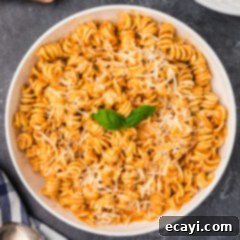
Vodka Sauce
IMPORTANT – There are often Frequently Asked Questions within the blog post that you may find helpful. Simply scroll back up to read them!
Print It
Pin It
Rate It
Save ItSaved!
Ingredients
- 1 ½ Tablespoons olive oil
- 1 Tablespoon minced garlic
- ½ cup chopped onion
- 1 teaspoon red pepper flakes
- 2 Tablespoons tomato paste
- ¼ cup vodka
- 28 ounces canned diced tomatoes not drained
- 1 Tablespoon Italian seasoning
- 1 teaspoon garlic salt
- ½ teaspoon black pepper
- 2 ½ Tablespoons balsamic vinegar
- ½ cup heavy whipping cream
- ¼ cup grated parmesan cheese
- 4 fresh basil leaves or 1 teaspoon dried basil
Things You’ll Need
-
Large heavy bottomed skillet
-
Food processor
Before You Begin & Recipe Notes
- For the best vibrant flavor, fresh basil is recommended. If it’s not available, you can substitute with 1 teaspoon of dried basil, adding it along with the other dried seasonings.
- The quality of vodka you use subtly impacts the sauce. Choose a vodka you enjoy; it doesn’t need to be top-shelf, but avoid anything that tastes harsh. The vodka enhances flavors and aids in emulsification, contributing to the sauce’s signature texture and taste.
- To store leftovers: Allow the homemade vodka sauce to cool completely before transferring it to an airtight container or a sealed jar. It will keep well in the refrigerator for up to 5 days. For reheating, gently warm the sauce in a saucepan over medium-low heat, stirring occasionally, until it’s heated through.
- To freeze for longer storage: Once fully cooled, seal the sauce in an airtight freezer-safe jar, container, or a large ziptop bag. Make sure to leave about an inch of space at the top for expansion during freezing. The sauce can be frozen for up to 5 months. Thaw it overnight in the refrigerator before reheating in a saucepan over medium-low heat.
- For an extra smooth sauce, consider briefly blending the canned diced tomatoes before adding them to the skillet, or simply rely on the final blending step to achieve your preferred consistency.
Instructions
-
Heat olive oil in a large skillet over medium-high heat until it shimmers. Add minced garlic, chopped onion, and red pepper flakes. Cook for 2-3 minutes until fragrant.
-
Stir in tomato paste, vodka, undrained canned diced tomatoes, Italian seasoning, garlic salt, and black pepper. Bring to a gentle boil, stirring occasionally. Add balsamic vinegar, heavy cream, and grated Parmesan cheese. Stir well to combine and return to a gentle boil for 1-2 minutes.
-
Carefully transfer the sauce from the skillet to a food processor. Add chopped fresh basil leaves. Process until the sauce is completely smooth and no chunks remain. Serve immediately over your favorite pasta or use in other dishes.
Nutrition
The recipes on this blog are tested with a conventional gas oven and gas stovetop. It’s important to note that some ovens, especially as they age, can cook and bake inconsistently. Using an inexpensive oven thermometer can assure you that your oven is truly heating to the proper temperature. If you use a toaster oven or countertop oven, please keep in mind that they may not distribute heat the same as a conventional full sized oven and you may need to adjust your cooking/baking times. In the case of recipes made with a pressure cooker, air fryer, slow cooker, or other appliance, a link to the appliances we use is listed within each respective recipe. For baking recipes where measurements are given by weight, please note that results may not be the same if cups are used instead, and we can’t guarantee success with that method.
